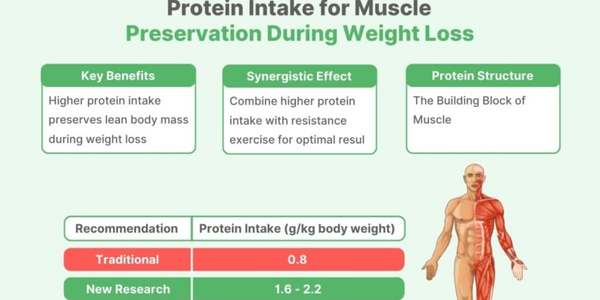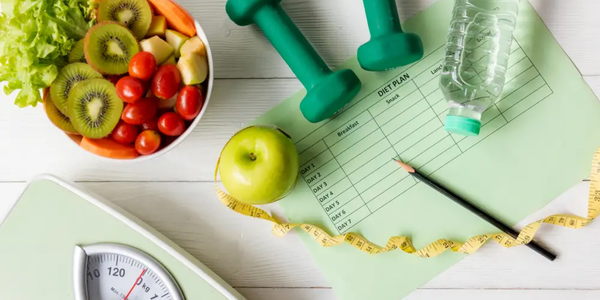There’s a common frustration many people share: you work hard to lose weight, but end up losing muscle along with fat. You feel weaker, not stronger. Flatter, not leaner. So, how do you lose fat but keep muscle?
Whether you’re an athlete cutting for a competition, or simply someone looking to get leaner without shrinking your hard-earned gains, this guide is your blueprint. We’ll break down the science, strategies, and step-by-step tactics to help you shed fat while preserving (and even building) muscle.
Let’s dive in.
Why Muscle Preservation Matters During Fat Loss
Losing fat is great—but losing muscle is not. Here’s why you should aim for body recomposition, not just weight loss.
Benefits of Maintaining Muscle:
-
Boosts metabolism: Muscle burns more calories at rest than fat.
-
Improves physique: A lean, muscular body looks healthier and more athletic.
-
Enhances strength and performance: Essential for both everyday function and fitness goals.
-
Protects bone health and joint integrity.
Too many people follow aggressive crash diets that cause rapid muscle loss, leading to fatigue, hormonal imbalances, and rebound weight gain.

How Fat Loss and Muscle Growth Work Differently
Understanding how the body burns fat vs. builds muscle helps you design a smarter plan.
Fat Loss Basics:
-
Requires a caloric deficit (eating fewer calories than you burn).
-
Encouraged by cardio, high-protein diets, and movement throughout the day.
Muscle Preservation/Growth Basics:
-
Requires muscle stimulation (resistance training).
-
Supported by adequate protein intake and recovery.
-
Prefers caloric maintenance or slight surplus, but muscle can still be maintained in a deficit with proper planning.
So the goal is to strike a delicate balance—create a slight deficit to burn fat, while still fueling your muscles.
Step 1: Create a Moderate Caloric Deficit (Not Too Aggressive)
One of the biggest mistakes people make is cutting calories too drastically. This causes the body to burn both fat and muscle.
Aim for:
-
A 15–25% calorie deficit from your maintenance level.
-
Slow and steady fat loss: 0.5–1 pound per week is ideal.
💡 Pro Tip: Use a TDEE calculator to estimate your maintenance calories, then reduce that number slightly.

Step 2: Prioritize Protein—Your Muscle’s Best Friend
If there’s one non-negotiable nutrient for fat loss and muscle preservation, it’s protein.
Protein Guidelines:
-
1.6–2.2 grams per kg of body weight (0.7–1 g per lb)
-
Spread intake across 3–5 meals per day
-
Include complete sources like:
-
Lean meats
-
Eggs
-
Greek yogurt
-
Protein shakes
-
Legumes and tofu (for plant-based eaters)
-
Why Protein Is Critical:
-
Prevents muscle breakdown
-
Keeps you full and reduces cravings
-
Supports recovery and repair
Step 3: Keep Lifting Heavy (Don’t Switch to “Toning” Workouts)
Many people ditch the heavy weights for endless cardio when trying to lose fat. That’s a mistake.
Stick with:
-
Compound lifts: squats, deadlifts, bench press, pull-ups
-
Progressive overload: aim to maintain or improve strength
-
3–5 weight training sessions per week
Don’t:
-
Replace strength with only high-rep, low-weight circuits
-
Skip workouts due to fatigue from dieting
💪 You don’t build or maintain muscle without stimulus—your body will only keep what it’s using.

Step 4: Smart Cardio for Fat Loss (Without Muscle Loss)
Cardio can help increase your calorie burn, but too much can be counterproductive for muscle retention.
Best Cardio for Fat Loss + Muscle Retention:
-
Low-intensity steady-state (LISS): like walking or biking
-
High-Intensity Interval Training (HIIT): short, intense bursts 2–3 times per week
Cardio Guidelines:
-
Don’t exceed 3–4 sessions per week
-
Prioritize strength workouts first
-
Avoid fasted cardio if you’re lifting shortly after
💡 A brisk 30-minute walk post-meal improves insulin sensitivity and encourages fat loss.
Step 5: Sleep and Stress—The Fat Loss Killers You Ignore
This might surprise you, but sleep and stress dramatically impact both fat loss and muscle retention.
Sleep Tips:
-
Aim for 7–9 hours per night
-
Create a consistent wind-down routine
-
Reduce screen time 1 hour before bed
Why Sleep Matters:
-
Supports hormone balance (testosterone, cortisol, growth hormone)
-
Improves recovery
-
Reduces cravings and emotional eating
Manage Stress:
-
Use mindfulness, meditation, journaling
-
Avoid excessive stimulants (too much caffeine)
-
Take rest days seriously—overtraining leads to muscle breakdown

Step 6: Supplement Wisely (But Don’t Rely on Them)
Supplements won’t make or break your results—but some can help optimize your journey.
Top Supplements for Fat Loss & Muscle Retention:
-
Whey Protein: convenient way to hit protein goals
-
Creatine Monohydrate: supports strength, recovery, and hydration
-
Omega-3s: reduce inflammation and support recovery
-
Vitamin D & Magnesium: for hormonal health and sleep
Avoid:
-
Fat burners (mostly ineffective and overstimulating)
-
Anything that promises “rapid” fat loss
Remember: food, training, and sleep are 90% of the game.
Step 7: Track, Adjust, and Stay Consistent
Success isn’t just about a plan—it’s about monitoring and adjusting.
Track:
-
Bodyweight (daily or weekly averages)
-
Progress photos every 2–4 weeks
-
Strength performance in the gym
-
Energy levels and recovery
Adjust:
-
If fat loss stalls for 2+ weeks, reduce calories by another 100–150/day or increase movement.
-
If strength drops or fatigue rises, you may need more recovery or slightly more food.
🎯 Stay patient. Body recomposition takes time. Think in months, not weeks.
Real-World Example: John’s Transformation
John, a 35-year-old office worker, wanted to lose belly fat but didn’t want to lose the muscle he built over two years of lifting. He:
-
Dropped his calories by 20%
-
Ate 180g of protein daily
-
Lifted 4x per week, focusing on compound lifts
-
Walked 8,000–10,000 steps daily
-
Slept 8 hours consistently
In 12 weeks, John lost 12 pounds of fat, increased his bench press, and had more visible muscle than ever before.

Final Thoughts: Fat Loss with Muscle Preservation Is a Lifestyle
Learning how to lose fat but keep muscle isn’t just about following a 4-week challenge. It’s about adopting a sustainable lifestyle that includes:
-
Smart training
-
Balanced nutrition
-
Recovery
-
Consistency
Your body will thank you—not just for how it looks, but how it feels and performs.
Ready to Transform?
Have you tried losing fat while keeping muscle? Share your journey or questions in the comments below!
👉 Want more guidance? Check out our related guides on:


